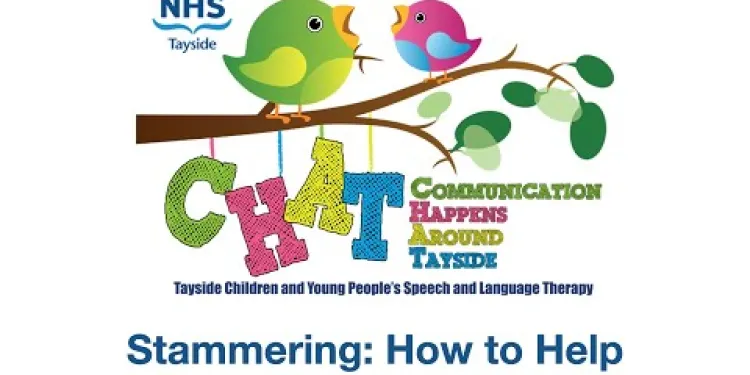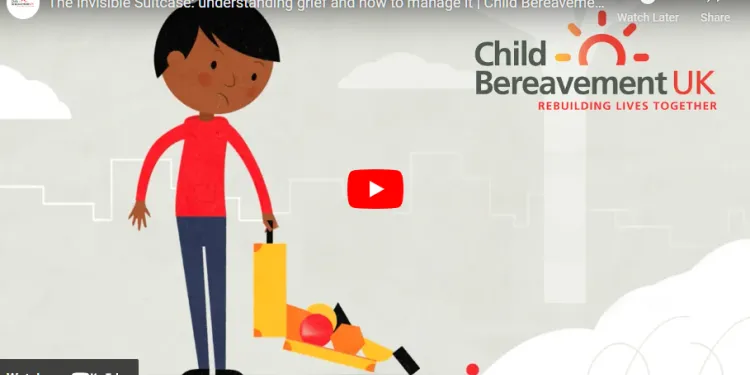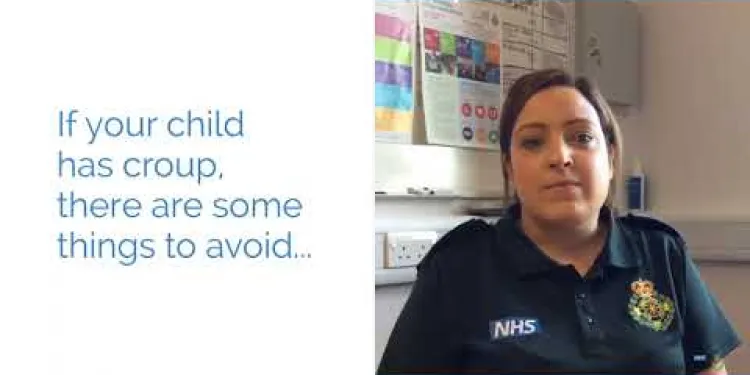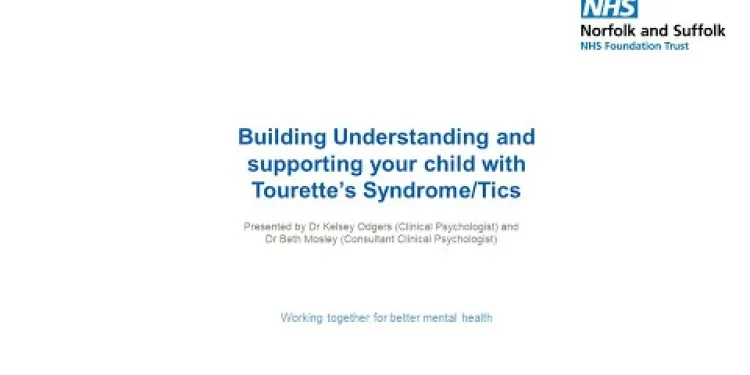Find Help
More Items From Ergsy search
-

My Stammering Child
Relevance: 100%
-

Stammering myth 4: You should ignore a child's stammer
Relevance: 91%
-

Why do some children stammer?
Relevance: 71%
-

Practical strategies to support young children who stammer
Relevance: 65%
-

Stammering: myths about the cause of stammering
Relevance: 64%
-

Giving Voice - Stammer and Fluency Problems
Relevance: 61%
-

Stammering: How to Help
Relevance: 60%
-

Adam's story on stammering - Therapy
Relevance: 57%
-

Will's story on having therapy - Stammering
Relevance: 57%
-

I don’t need to be fixed – what I wish the world understood about stammering
Relevance: 50%
-

Child Bereavement
Relevance: 38%
-

Navigating Child Custody Laws in the UK
Relevance: 35%
-

Caring for a child with fever | NHS
Relevance: 34%
-

Child Care Proceedings | Family Law
Relevance: 33%
-

Can my child get braces on the NHS?
Relevance: 33%
-

My child has vomiting and diarrhoea - what do I do?
Relevance: 33%
-

How to Keep a Child With Chickenpox Comfortable
Relevance: 32%
-

Navigating Child Custody and Visitation Rights in Modern UK
Relevance: 32%
-

What happens when my child has an EEG?
Relevance: 32%
-

Advice if your child has... A High temperature
Relevance: 31%
-

Managing and treating your child's eczema
Relevance: 31%
-

What to do when your child has... croup
Relevance: 31%
-

Eczema - Your child's appointment | Dermatology | Paediatrics
Relevance: 30%
-

How do I treat my child's cold? (9 - 30 months) | NHS
Relevance: 30%
-

Having a child with Down's syndrome | NHS
Relevance: 30%
-

Understanding Parental Rights in Light of New UK Child Protection Legislation
Relevance: 30%
-

Campaigners Urge Review of Child Benefit Rates in Light of Inflation
Relevance: 29%
-

Three-year limit for child sexual abuse claims to be removed
Relevance: 29%
-

Factors that trigger eczema in your child
Relevance: 29%
-

Building Understanding and Supporting Your Child with Tourette’s Syndrome/Tics
Relevance: 28%
-

What should I do if my child has impetigo?
Relevance: 25%
-

Having a child with Edwards' syndrome (trisomy 18) | NHS
Relevance: 25%
-

What criteria must be met for a child to be eligible for free school meals?
Relevance: 25%
-

How can I identify if my child has SEND?
Relevance: 24%
-

How can parents advocate for their SEND child?
Relevance: 24%
-

What British Council Scholarships/Bursaries may be available to help me with the education costs of my child?
Relevance: 20%
-

Can gonorrhoea be passed from mother to child?
Relevance: 17%
-

Having an operation at the Children’s Centre
Relevance: 14%
-

How are parents involved in the SEND process?
Relevance: 14%
-

Children Act 1989 section 20 - Legislation
Relevance: 13%
Stammering Myth 4: You Should Ignore a Child's Stammer
Understanding Stammering
Stammering, also known as stuttering, is a speech disorder commonly affecting both children and adults. It is characterised by disruptions in the normal flow of speech, such as repetitions of sounds, syllables, or words, prolongations of sounds, and involuntary pauses. In the United Kingdom, around 8% of children will experience stammering at some point. Understanding and addressing this issue is crucial for their development and well-being.The Myth: Ignoring a Child's Stammer
A commonly held belief is that you should ignore a child's stammer, assuming it will naturally resolve itself over time. However, this myth can be detrimental. Ignoring a stammer may inadvertently convey to the child that their speech difficulties are not important or that they should be ashamed of their stammer. This can negatively impact their self-esteem and communication skills, making the situation worse.The Importance of Early Intervention
Early intervention can make a significant difference in managing and reducing stammering. Speech and language therapists in the UK recommend acknowledging the child's communication efforts positively. By showing patience and support, parents and caregivers can create a safe environment for the child, encouraging them to express themselves without fear or frustration.Practical Support for Children Who Stammer
Several strategies can help a child who stammers: - **Listen attentively**: Give them time to talk without interrupting or finishing their sentences. - **Maintain eye contact**: Show them that you are interested in what they have to say, not how they say it. - **Encourage talking**: Engage in conversations that are relaxed and fun. - **Model slow speech**: Speak slowly and clearly yourself, which can help the child feel less rushed and more relaxed.Seeking Professional Help
If you are concerned about your child's stammer, seek advice from a speech and language therapist. The NHS provides access to such specialists who can offer tailored strategies and support for your child. The British Stammering Association (now called Stamma) is also an excellent resource for information and guidance.Stammering Myth 4: You Should Ignore a Child's Stammer
What is Stammering?
Stammering, or stuttering, is when someone has trouble speaking smoothly. Kids and adults can both have a stammer. It means they might repeat sounds or words, make sounds longer, or have pauses when trying to talk. In the UK, about 8 out of 100 children might stammer at some time. It is important to understand and help with stammering for the child's growth and happiness.The Wrong Idea: Ignoring a Child's Stammer
Some people think you should not pay attention to a child's stammer and that it will go away by itself. But this is not true. Ignoring a stammer might make the child feel like their talking is not important. They might feel embarrassed or sad, which can make talking harder for them.Why Helping Early is Important
Getting help early can really help with stammering. In the UK, speech and language experts say it's good to be positive about how the child talks. By being patient and supportive, adults can help children feel safe and happy to talk without being scared or upset.Ways to Help a Child Who Stammers
You can do several things to help a child who stammers: - **Listen carefully**: Let them finish talking without cutting in or finishing their sentences for them. - **Look them in the eye**: Show them you care about what they say, not just how they say it. - **Make talking fun**: Have enjoyable and easy conversations with them. - **Talk slowly**: When you speak slowly and clearly, it helps the child feel more relaxed too.Getting Expert Help
If you are worried about your child's stammer, talk to a speech and language expert. The NHS can help you find these specialists. They can give special advice and help for your child. Also, the British Stammering Association, now called Stamma, is a great place to find information and get help.Frequently Asked Questions
Is it true that you should ignore a child's stammer?
No, ignoring a child’s stammer is not recommended. Acknowledging the stammer in a supportive way can help the child feel more comfortable and less anxious about speaking.
Why shouldn't I ignore a child's stammer?
Ignoring a child’s stammer can make the child feel more anxious and frustrated, potentially worsening the stammer. It's important to support the child and help them develop confidence in their speech.
What is the best way to respond when a child stammers?
The best way to respond is to listen patiently, maintain eye contact, and give the child time to finish speaking. Avoid finishing sentences for them or rushing them.
Will paying attention to a child's stammer make it worse?
No, paying attention in a supportive and understanding manner can actually be beneficial. It shows the child that you're interested in what they are saying, not just how they are saying it.
How can I support a child who stammers?
You can support a child who stammers by showing patience, responding calmly, not interrupting, and offering positive encouragement. Creating a relaxed speaking environment can also help.
Should I talk about the stammer with the child?
Yes, it can be helpful to talk about the stammer if done in a supportive, non-judgmental way. It lets the child know that it’s okay to have a stammer and that you’re there to support them.
Can a stammer be outgrown without intervention?
Some children may outgrow their stammer as they develop, but others may need support from speech and language therapists. Early intervention can be beneficial.
Is stammering caused by nervousness or anxiety?
While nervousness and anxiety can exacerbate stammering, they are not the root cause. Stammering is often due to a combination of genetic, neurological, and environmental factors.
Are there specific strategies to help reduce stammering?
Yes, speech and language therapists can provide specific techniques and strategies tailored to the individual child to help manage stammering.
How common is stammering in children?
Stammering affects about 5% of children at some point, most commonly between the ages of 2 and 5 as they develop speech and language skills.
Is stammering a sign of a more serious problem?
Not necessarily. Stammering is primarily a speech disorder and not typically linked to other serious health issues. However, it’s always good to consult a professional for an accurate assessment.
Will a child’s stammer improve with time?
Some children may see improvements in their stammer over time, especially with support from family, teachers, and speech and language therapists.
Does a stammer indicate low intelligence?
No, stammering is not related to intelligence. Many highly intelligent and successful individuals stammer.
Should I correct a child when they stammer?
It's not helpful to correct a child’s speech as it can increase anxiety and make the stammer worse. Instead, focus on what they are saying and offer encouragement.
Can speech and language therapy help a child who stammers?
Yes, speech and language therapy can be very effective in helping children who stammer. Therapists can provide strategies to manage stammering and build communication confidence.
Should you ignore when a child stutters?
No, you should not ignore it. When a child stutters, it is important to listen and be patient. You can help by giving them time to speak and not rushing them.
Here are some tips to help a child who stutters:
- Be patient and let the child finish speaking.
- Keep eye contact and show you're listening.
- Do not interrupt or finish their sentences.
- Speak slowly and clearly to the child.
If you are worried, it's okay to talk to a speech therapist for more help.
Don't ignore a child who stammers. Say something supportive. This helps the child feel better and less worried about talking.
Why is it important to help a child who stammers?
A stammer is when talking is hard for a child. If a child has a stammer, we should not ignore it. Helping the child is important.
If a child gets help, they can feel better and talk more easily. Talking to a speech therapist can help a lot.
Parents and carers can support the child by being patient and listening carefully. Do not rush the child or finish their words.
Some tools like picture cards can make talking easier. Play games that help with talking slowly and clearly.
Being calm and kind is important. This helps the child feel safe and happy while talking.
If you pretend not to notice a child’s stammer, it can make them feel worried and upset. This might make their stammer worse. It’s important to help the child feel good about talking.
How should I help when a child stutters?
It can be hard for a child when they stutter. Here are some easy tips to help:
- Listen well and be patient.
- Do not rush them. Give them time to speak.
- Look at them and show you care.
- Speak slowly when you talk to them.
- Do not finish their words for them.
Helping tools:
- Use picture cards to help them express words.
- Read books together slowly.
- Play games that practice speaking.
These steps can help make speaking easier for a child who stutters.
The best way to help is to listen carefully. Look at the child when they talk. Let them finish what they want to say. Don't rush them or speak for them.
Does talking about a child's stammer make it worse?
When a child stammers, we might worry that talking about it will make it worse.
But talking in a kind way can help them feel better.
You can use simple tools like:
- Speaking slowly and clearly.
- Being patient and giving them time to speak.
- Using pictures or stories to encourage talking.
It's okay to notice the stammer, just be gentle and supportive.
It's good to listen to kids in a kind way. This helps them know you care about what they say, not just how they say it.
How can I help a child who stutters?
You can help a child who finds it hard to talk smoothly. Be patient and listen. Stay calm and don't interrupt. Say nice things to encourage them. Try to make talking feel easy and safe.
Should I talk about the stammer with the child?
Is it a good idea to talk with the child about their stammer?
Yes, talking can help. It shows the child that it is okay to have a stammer. You can say, "It's fine to talk slowly," or "We can practice speaking together."
Use kind words and listen. This makes the child feel safe and understood.
You can also try using games or pictures to help the child with speaking.
Yes, it is good to talk about stammering. Do this in a kind and helpful way. This shows the child it is okay to have a stammer. It lets them know you are there to help them.
Can someone stop stammering as they grow up without help?
Some kids might stop stammering as they grow up, but others might need help from speech and language experts. Getting help early can be good.
Does being nervous make you stutter?
Stuttering, also called stammering, is when you have trouble speaking smoothly. It's not only caused by feeling nervous or worried. Sometimes people stutter, even when they feel calm.
It's important to remember that you are not alone. Many people stutter. Practice speaking slowly and trying to stay relaxed can help. If you want, you can talk to a speech therapist. They can give you more tips to help with stuttering.
Feeling nervous or worried can make stammering worse, but they don't cause it. Stammering usually happens because of things like genes, how the brain works, and surroundings.
How can I help someone stop stuttering?
Some ways can help someone who stutters:
- Speak Slowly: Take your time when talking.
- Breathe Deeply: Deep breaths can relax you.
- Practice Talking: Talk often with friends or family.
- Use Short Sentences: Start with small, easy words.
- Use Apps: Some apps can help with speaking.
- See a Speech Therapist: They are experts who can help you.
Yes, speech and language therapists can help children who stammer. They can teach tricks and tips that work just for that child.
How often do kids stammer?
Some kids have trouble speaking, called stammering. It is not unusual. Many children stammer at some point when they are learning to talk.
If you know a child who stammers, there are ways to help. You can talk slowly and listen carefully. Try not to rush them when they speak.
If you need more help, there are tools and people who can assist. Speech therapists are great at helping kids who stammer.
About 5 out of every 100 children may stammer. This usually happens when they are between 2 and 5 years old as they learn to talk.
Is Stammering a Sign of a Bigger Problem?
Some people stammer when they talk. Stammering means having trouble saying words smoothly. It can make speaking hard.
For most people, stammering is not a big problem. It can be something that happens when they are excited or nervous.
If you are worried about stammering, here are some things you can do:
- Talk to a grown-up who can help, like a teacher or a parent.
- Visit a speech therapist. They know how to help people speak clearly.
- Practice speaking slowly. Take your time with words.
Everyone is different, and that's okay. Getting help can make talking easier.
No, not really. Stammering is when it's hard to talk smoothly, but it doesn't usually mean something is wrong with your health. It's a good idea to talk to a doctor to be sure.
Will a child's stammer get better as they grow?
Some children find it hard to speak without stammering.
Stammering means their words can get stuck or repeat.
For many children, stammering gets better as they grow older.
Talking to a speech therapist can help.
Trying to talk slowly and being patient is also good.
Reading books and playing word games can help too.
If you have concerns, you can talk to a doctor or teacher for advice.
Some kids might get better at talking without stammering as they get older. Family, teachers, and special talking helpers can help them a lot.
Does a stammer mean someone is not smart?
No, having a stammer does not mean someone is not smart. A stammer is just how some people talk. It does not show how clever or intelligent they are.
Some tools can help people who stammer. Speech therapy is one way to help. Talking slowly and practicing speaking can also help.
No, stammering does not mean you are not smart. Many smart and successful people stammer.
What should I do if a child stutters?
When a child stutters, be patient and listen. Let them finish what they are saying without interrupting.
It's important to talk slowly and calmly with them. This can help the child feel more comfortable.
You can also ask the child how they feel and if they want help. Some kids might like to practice speaking more slowly or playing word games.
You could suggest talking with a speech teacher to get more help.
Do not correct a child's talking. This can make them worry and stammer more. Listen to what they say and be encouraging.
Can speech and language therapy help a child who stutters?
Yes, speech and language therapy can help a child who stutters. A speech therapist is someone who knows a lot about speaking and helping people who have trouble with talking. They can teach children ways to talk more smoothly.
If a child stutters, it is important to talk to a speech therapist. They can give exercises and activities to help make speaking easier and more fun. It is also helpful to be patient and listen carefully when the child talks.
Some helpful tools or techniques include breathing exercises, taking turns while talking, and using simple words. It can be helpful to make talking a fun and relaxing activity.
Yes, speech and language therapy can help children who stammer. Therapists teach ways to make talking easier and help kids feel more confident.
Useful Links
- Ergsy carfully checks the information in the videos we provide here.
- Videos shown by Youtube after a video has completed, have NOT been reviewed by ERGSY.
- To view, click the arrow in centre of video.
- Most of the videos you find here will have subtitles and/or closed captions available.
- You may need to turn these on, and choose your preferred language.
- Go to the video you'd like to watch.
- If closed captions (CC) are available, settings will be visible on the bottom right of the video player.
- To turn on Captions, click settings .
- To turn off Captions, click settings again.
More Items From Ergsy search
-

My Stammering Child
Relevance: 100%
-

Stammering myth 4: You should ignore a child's stammer
Relevance: 91%
-

Why do some children stammer?
Relevance: 71%
-

Practical strategies to support young children who stammer
Relevance: 65%
-

Stammering: myths about the cause of stammering
Relevance: 64%
-

Giving Voice - Stammer and Fluency Problems
Relevance: 61%
-

Stammering: How to Help
Relevance: 60%
-

Adam's story on stammering - Therapy
Relevance: 57%
-

Will's story on having therapy - Stammering
Relevance: 57%
-

I don’t need to be fixed – what I wish the world understood about stammering
Relevance: 50%
-

Child Bereavement
Relevance: 38%
-

Navigating Child Custody Laws in the UK
Relevance: 35%
-

Caring for a child with fever | NHS
Relevance: 34%
-

Child Care Proceedings | Family Law
Relevance: 33%
-

Can my child get braces on the NHS?
Relevance: 33%
-

My child has vomiting and diarrhoea - what do I do?
Relevance: 33%
-

How to Keep a Child With Chickenpox Comfortable
Relevance: 32%
-

Navigating Child Custody and Visitation Rights in Modern UK
Relevance: 32%
-

What happens when my child has an EEG?
Relevance: 32%
-

Advice if your child has... A High temperature
Relevance: 31%
-

Managing and treating your child's eczema
Relevance: 31%
-

What to do when your child has... croup
Relevance: 31%
-

Eczema - Your child's appointment | Dermatology | Paediatrics
Relevance: 30%
-

How do I treat my child's cold? (9 - 30 months) | NHS
Relevance: 30%
-

Having a child with Down's syndrome | NHS
Relevance: 30%
-

Understanding Parental Rights in Light of New UK Child Protection Legislation
Relevance: 30%
-

Campaigners Urge Review of Child Benefit Rates in Light of Inflation
Relevance: 29%
-

Three-year limit for child sexual abuse claims to be removed
Relevance: 29%
-

Factors that trigger eczema in your child
Relevance: 29%
-

Building Understanding and Supporting Your Child with Tourette’s Syndrome/Tics
Relevance: 28%
-

What should I do if my child has impetigo?
Relevance: 25%
-

Having a child with Edwards' syndrome (trisomy 18) | NHS
Relevance: 25%
-

What criteria must be met for a child to be eligible for free school meals?
Relevance: 25%
-

How can I identify if my child has SEND?
Relevance: 24%
-

How can parents advocate for their SEND child?
Relevance: 24%
-

What British Council Scholarships/Bursaries may be available to help me with the education costs of my child?
Relevance: 20%
-

Can gonorrhoea be passed from mother to child?
Relevance: 17%
-

Having an operation at the Children’s Centre
Relevance: 14%
-

How are parents involved in the SEND process?
Relevance: 14%
-

Children Act 1989 section 20 - Legislation
Relevance: 13%


